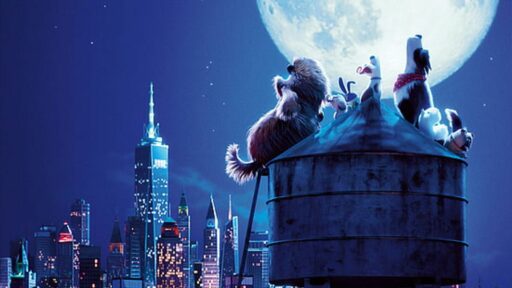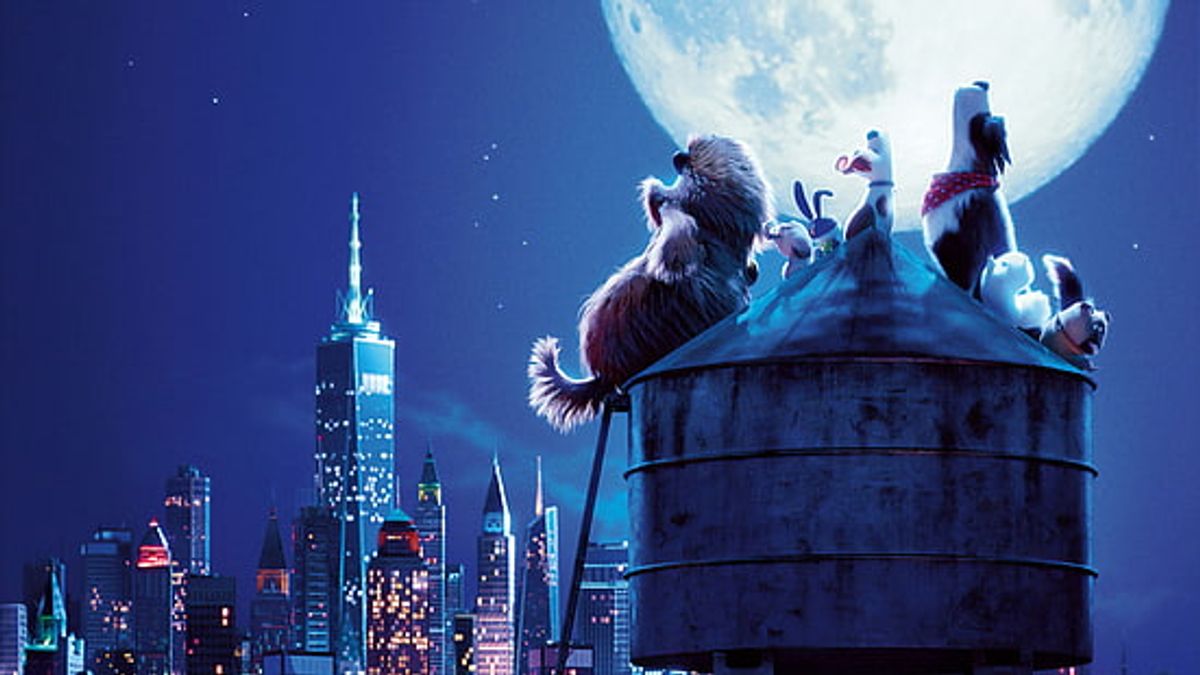Dive into the magical realm of animated movies—a universe where artistry and storytelling merge to create worlds that captivate our imaginations. From the meticulous precision of stop-motion to the limitless possibilities of CGI, and the nostalgic charm of 2D animation, this article explores the evolution, narrative depth, production intricacies, cultural significance, and celebrated achievements of animated films. Join us on a journey through the art and heart of animation, where every frame is a brushstroke in a grand visual masterpiece.
Key Takeaways
- The world of animation has evolved from traditional techniques like stop-motion to advanced CGI, with each method offering unique storytelling possibilities.
- Character development and world-building are crucial in animation, allowing audiences to form deep emotional connections and immerse themselves in fantastical universes.
- Behind-the-scenes efforts in concept art, voice acting, and post-production play a pivotal role in bringing animated stories to life.
- Animated films have a profound cultural impact, influencing popular culture, addressing societal issues, and reaching a global audience.
- The recognition of animated movies through awards like the Oscars highlights the genre’s artistic merit and the industry’s continuous innovation.
The Evolution of Animation: From Traditional to Digital

The Art of Stop-Motion: A Testament to Craftsmanship
Stop-motion animation stands as a pinnacle of artistic dedication in the world of animated movies. Each frame in a stop-motion film is a meticulously crafted work of art, aiming to bring to life immersive worlds and memorable characters. This technique, which captures a series of still images to create the illusion of motion, showcases the full potential of animation to deliver complex stories with distinct visuals.
- The Nightmare Before Christmas (1993)
- James and the Giant Peach (1996)
- The Wolf House (2018)
These films, among others, are not just technical achievements but also narrative triumphs. The painstaking process behind each scene is a testament to the filmmakers’ commitment to their craft. The genre continues to evolve, with recent entries pushing the boundaries of storytelling and visual expression.
The evolution of stop-motion animation is a journey of both technical innovation and artistic exploration. It reflects the passion and creativity of the animators who breathe life into inanimate objects, frame by frame.
The Rise of CGI: Pushing the Boundaries of Reality
The advent of CGI, or computer-generated imagery, marked a revolutionary shift in the world of animated movies. The seamless integration of CGI into live-action films has allowed for the creation of characters and worlds that were once deemed impossible. From the dinosaurs of ‘Jurassic Park’ to the shape-shifting antagonist in ‘Terminator 2: Judgment Day’, CGI has expanded the filmmaker’s toolkit, enabling the portrayal of fantastical elements with stunning realism.
The true potential of CGI was fully realized with the release of ‘Toy Story’ in 1995, which was the first feature film to be entirely computer-animated. This milestone heralded a new era for animation, with CGI becoming a mainstay in the industry.
The impact of CGI can be quantified by looking at the box office success of films that have utilized this technology. Here is a list of some of the highest-grossing CGI animated films:
- ‘Toy Story’ series
- ‘Shrek’ series
- ‘Frozen’ and ‘Frozen II’
- ‘Incredibles’ series
- ‘Finding Nemo’ and ‘Finding Dory’
CGI has not only transformed how stories are told but also how they are received by audiences worldwide. Its influence extends beyond the screen, affecting other areas such as video games, virtual reality, and even theme park attractions. As technology continues to advance, the boundaries of reality in animation are sure to be pushed even further.
2D Animation’s Resurgence: Embracing Artistic Roots
In an era where Pixar’s 3D animation seems to reign supreme, a quiet but powerful resurgence of 2D animation is captivating audiences and critics alike. This renaissance is not just a nostalgic nod to the past; it’s a deliberate choice by filmmakers to harness the unique qualities of 2D artistry that resonate with viewers on a deeply emotional level.
The return to 2D is marked by a celebration of diversity in animation styles. Studios like Cartoon Saloon have distinguished themselves with a visual signature that pays homage to cultural and historical art forms, such as Celtic and Medieval art, which imbue their films with a distinct identity. This approach has not only won them critical acclaim but also a dedicated fan base that appreciates the exploration of cinematic greatness through animation history.
The balance between artistry and popularity is crucial in defining the best movies of all time. While 3D animation continues to push the boundaries of technology, 2D animation remains a testament to the human touch in storytelling, proving that the most influential filmmakers are those who can blend innovation with tradition.
The table below highlights some notable 2D animated films and their achievements:
| Film Title | Studio | Notable Achievement |
|---|---|---|
| The Secret of Kells | Cartoon Saloon | Oscar Nomination for Best Animated Feature |
| Song of the Sea | Cartoon Saloon | Oscar Nomination for Best Animated Feature |
| The Breadwinner | Cartoon Saloon | Oscar Nomination for Best Animated Feature |
As we continue to witness this revival, it’s clear that 2D animation is not just surviving in the shadow of its 3D counterparts; it’s thriving by embracing its artistic roots and delivering stories that are as enchanting as they are visually stunning.
Storytelling Through Animation: Crafting Enchanting Narratives

Character Development and Emotional Engagement
In the realm of animated movies, character development is pivotal to the narrative’s success. It’s through the growth and experiences of characters that audiences form emotional connections, transforming a series of scenes into a compelling story. Characters must be crafted with depth and relatability to resonate with viewers, often reflecting the ups and downs of human life.
Animated films have the unique ability to explore complex themes such as freedom, family, and discrimination through their characters. For instance, the dynamic between characters like Robyn and Mebh in certain films exemplifies the power of relationships in storytelling, reminiscent of familial bonds seen in classics like My Neighbor Totoro.
The essence of animation lies in its capacity to weave character-driven narratives that captivate and move the audience, often leaving a lasting impression long after the credits roll.
Understanding the art of storytelling is crucial for animators and writers alike. It involves constructing conflicts and premises that are inherently character-driven, ensuring that the audience is not just watching events unfold but is emotionally invested in the characters’ journeys.
World-Building in Animated Universes
The magic of animated movies often lies in the vivid and immersive worlds they create. World-building in animation is not just about the visual splendor; it’s about constructing a universe that is coherent, believable, and serves the narrative. DreamWorks Animation, for instance, has mastered the art of transporting audiences to magical worlds, with each film adding to their impressive catalog of fantastical realms.
Effective world-building requires meticulous planning and a deep understanding of the story’s needs. A Guide to Worldbuilding for Filmmakers can be an invaluable resource, offering templates and insights to enhance storytelling capabilities. The process involves several key steps:
- Establishing the rules of the world
- Designing unique and consistent aesthetics
- Developing the history and culture of the world’s inhabitants
- Ensuring the world supports and enriches the plot
In animated films, the world itself often becomes a character, influencing the story and the characters’ journeys. It’s a testament to the craftsmanship that goes into animation, where every detail contributes to the audience’s experience. As we’ve seen with franchises like Star Wars, the setting can leave a lasting impact, becoming iconic in its own right.
Themes and Messages in Animated Features
Animated features are not just a visual treat; they are a medium rich with themes and messages that resonate across ages. The power of storytelling in animation lies in its ability to weave complex themes into narratives that are accessible to both children and adults.
Animated films often tackle universal themes such as friendship, courage, and love, while also delving into more nuanced topics like identity, societal norms, and environmental issues. For instance, many films emphasize the importance of overcoming fears with the support of friends, a message that is both simple and profound, especially for younger audiences.
Animation has no age limit, and its appeal is universal. The stories told through this medium can be as layered and complex as any live-action film, often using fairytale logic to impart lessons in a way that is engaging and memorable.
Here’s a look at some common themes found in animated features:
- Overcoming adversity
- The value of friendship
- The journey of self-discovery
- The impact of technology on society
- Environmental conservation
These themes are not only central to the plot but are also instrumental in shaping the characters and the worlds they inhabit. As animation continues to evolve, the messages it conveys remain a testament to the genre’s enduring ability to connect with audiences on a deep, emotional level.
Behind the Scenes: The Making of Animated Masterpieces

Concept Art and Pre-Production
The journey of an animated film begins long before the first frame is ever animated. It starts with concept art and pre-production, where the visual style of the movie is born. Concept artists translate ideas into visual representations, setting the tone for the entire project. These artists sketch characters, environments, and key scenes, establishing a cohesive look that will guide production.
- Initial character designs
- Environment and setting concepts
- Key scene storyboarding
- Color palettes and style guides
The pre-production phase is a crucible of creativity, where the raw elements of story and art fuse to form the foundation of the animated narrative.
During this phase, directors and artists collaborate closely, iterating on designs and storyboards. This iterative process ensures that the visual storytelling aligns with the narrative goals, creating a seamless blend of art and story that will captivate audiences. The table below outlines the key pre-production steps:
| Step | Description |
|---|---|
| 1. Concept Art | Creating the visual style of the film. |
| 2. Storyboarding | Visualizing the narrative in sequences. |
| 3. Design Refinement | Finalizing character and environment designs. |
| 4. Style Guides | Establishing consistent visual rules for production. |
As the pre-production phase concludes, the groundwork has been laid for animators to bring the film to life, frame by frame, in a process that marries technology with the timeless art of storytelling.
Voice Acting and Bringing Characters to Life
The alchemy of voice acting in animation is a pivotal element that transforms lines of script into breathing characters with distinct personalities. A strong voice cast can elevate an animated film, infusing it with life and relatability. For instance, the charm of Brendan in ‘The Secret of Kells’ is vividly brought to life by Evan McGuire’s performance, which captures an optimistic and child-like innocence. Similarly, the stern Abbot Cellach is given depth by Brendan Gleeson’s wonderful portrayal, and Christen Mooney adds a knowing weariness to the mysterious Aisling.
The synergy between voice actors and their animated counterparts is essential for creating an immersive experience for the audience.
The impact of voice acting extends beyond the main characters. Supporting roles, like Mick Lally’s Brother Aidan, contribute to the richness of the story, offering wisdom and humor. The voice cast, together with the film’s score, creates a harmonious blend that resonates with viewers. For example, the music composed by Bruno Coulais, in collaboration with Kila, adds a Celtic and Irish flair that complements the voice performances in ‘The Secret of Kells’.
- Pixar’s storytelling magic blends art and technology to create immersive worlds, characters, and emotional connections.
- Their films inspire, educate, and entertain across generations, leaving a lasting impact on viewers.
Post-Production and the Role of Music and Sound
The post-production phase of animated films is where the magic of sound comes to life. Balancing dialogue, music, and sound effects is an essential aspect of creating a successful animated production. Each element plays a crucial role in conveying emotions and enhancing the storytelling experience. The music, often whimsical and atmospheric, sets the tone for the adventure the film throws you into. It’s not just about having a catchy soundtrack; it’s about creating a soundscape that complements the visual artistry.
The role of music and sound effects in animation goes beyond mere background noise; they are pivotal in creating emotional depth and immersion.
Voice actors bring characters to life with their performances, but it’s the subtle nuances of sound design that complete the character’s identity. From the rustling of leaves to the clashing of swords, sound effects add a layer of realism to the animated world. The collaboration between composers, sound designers, and the director is key to achieving a harmonious blend of audio and visuals.
The Cultural Impact of Animated Films

Influence on Popular Culture and Fashion
Animated films have long transcended the boundaries of mere entertainment, weaving their magic into the very fabric of popular culture and fashion. Characters and motifs from beloved animations frequently find their way into clothing lines, accessories, and even high fashion runways, reflecting the deep connection audiences feel with these stories.
- Vintage cartoons have become an inseparable part of popular culture history, contributing significantly to shaping aesthetic identities and lifestyles.
- Iconic animated characters often serve as muses for fashion designers, inspiring collections that resonate with fans and fashionistas alike.
- The influence of animation is evident in the recurring trends that echo the distinctive styles of various animated eras, from the whimsical to the futuristic.
The synergy between animation and fashion not only celebrates creativity but also fosters a unique space where art and commercial appeal coexist harmoniously.
Animation’s Role in Addressing Societal Issues
Animated films have long been a medium for more than just entertainment; they serve as a mirror to society, reflecting and sometimes challenging the status quo. Animation has the power to address complex societal issues in a way that is accessible to audiences of all ages. For instance, themes of greed, selfishness, and the importance of community and cooperation are woven into stories that, while aimed at younger audiences, resonate with viewers across generations.
- Pixar’s influence in popularizing computer-animated features has set a precedent in storytelling that often includes moral and ethical lessons.
- Films that introduce multiple languages and cultural elements encourage inclusivity and global awareness without patronizing the audience.
- Animated movies can tackle topics like environmentalism, equality, and social justice, presenting them in a manner that is engaging and thought-provoking.
The true artistry in animation lies not only in its visual spectacle but also in its ability to inspire and educate. Animated features have the unique capability to simplify and humanize issues, making them understandable for children, yet still compelling for adults. This dual appeal is crucial in fostering discussions around important topics.
The question remains whether the industry has reached its peak or if there is a lack of originality hindering further innovation. However, the continuous evolution of animated storytelling suggests that there is still much to explore and many societal conversations to spark through this enchanting art form.
The Global Reach of Animated Stories
Animated films have transcended cultural and linguistic barriers, becoming a universal language of creativity and emotion. DreamWorks Animation, for instance, has played a pivotal role in this global phenomenon. With a catalog of over 50 films, they have enchanted audiences worldwide, showcasing the power of animation to unite people across different backgrounds.
The reach of animated stories is not limited to entertainment; they often carry powerful messages that resonate globally. The ‘Bee Movie’, for example, has had a significant cultural impact, inspiring educational outreach and environmental messages. Animated films have the unique ability to address complex themes in a way that is accessible to both children and adults, making their global impact profound and lasting.
While challenges exist in distributing foreign animated films, especially in a year like 2020, the desire for these stories remains strong. Festivals and online platforms are becoming increasingly important in bringing these films to a wider audience, despite legal and logistical hurdles.
Celebrating Animation: Awards and Recognition

The Significance of the Oscars and Other Awards
The Academy Awards, commonly known as the Oscars, are a testament to the pinnacle of achievement in the film industry, including the realm of animation. These prestigious awards not only recognize artistic and technical merit but also serve as a beacon for quality and innovation in animated storytelling.
Animated features and shorts that receive an Oscar nomination often see a surge in popularity and critical acclaim. For instance, the Oscar-nominated animated shorts from a recent year were described as varied, endearing, and charming, each with their own unique visual style. This recognition can be a significant boost for the creators and can lead to further opportunities in the industry.
- Best Animated Feature
- Best Animated Short Film
These categories highlight the incredible talent and hard work that goes into making animated films. It’s not just the Oscars; other awards like the Annies and BAFTAs also play a crucial role in celebrating the art of animation. They provide a platform for a diverse range of stories and styles to be acknowledged and appreciated on a global stage.
Notable Achievements in Animation History
The landscape of animated films has been marked by numerous milestones that have shaped the industry. The year 2009 stands out as a pivotal moment, with a surge in both the quality and diversity of animated features. This was the year audiences were treated to the likes of Fantastic Mr. Fox, Up, and The Secret of Kells, the latter marking Cartoon Saloon’s first major theatrical release and Oscar nomination.
Pixar’s influence on animation is undeniable, with their groundbreaking release of Toy Story in 1995 setting a new standard for computer-animated features. Their consistent production of popular event films has cemented their position at the forefront of the animation world.
The recognition of foreign animated films in major award systems has been a significant development, broadening the scope of storytelling and artistic expression in the genre.
The Disney Fab 50 Character Collection is a testament to the enduring legacy of animated characters, with 50 sculptures of beloved figures from Toy Story and Ratatouille among others, gracing Disney theme parks and inspiring fans to explore the enchanting world of animation through local movie theaters and the Disney Movie Club.
The Future of Animation in the Awards Circuit
As the awards circuit evolves, animated films from independent and international studios are gaining prominence, reflecting a shift towards a more inclusive and diverse recognition of storytelling. The Oscars, for instance, have seen a notable increase in nominations for animated shorts and features from around the globe, highlighting the richness of global storytelling in theaters.
- 2009: A pivotal year with films like Fantastic Mr. Fox and Up.
- 2019: A strong year for animated shorts, with Oscar nominations for works like Bao and Late Afternoon.
The growing appreciation for animation in award shows is a testament to the medium’s ability to convey complex themes and resonate with a broad audience.
The future of animation in the awards circuit promises to be an exciting one, with a continued trend towards celebrating cinematic excellence across a wider array of cultures and creative approaches. The recognition of foreign animated films and the success of studios like Cartoon Saloon underscore the industry’s commitment to diversity and innovation.
Conclusion: The Timeless Allure of Animated Storytelling
The world of animated movies is a boundless landscape where art and storytelling converge to create magic. From the tactile charm of stop-motion classics like The Nightmare Before Christmas to the lush, digital realms of Pixar’s Up, animation offers a unique medium for exploring the depths of imagination. Studios like Cartoon Saloon continue to push the envelope, crafting visually stunning masterpieces such as Wolfwalkers that resonate with audiences of all ages. As we’ve journeyed through the enchanting worlds these films create, it’s clear that the heart of animation lies in its ability to weave compelling narratives with breathtaking visuals. Whether it’s through the meticulous craft of stop-motion, the innovative use of CGI, or the fluid beauty of 2D animation, these films are not just entertainment—they are a testament to the enduring power of storytelling and the human spirit’s quest for creativity.
Frequently Asked Questions
What is the significance of stop-motion animation in the film industry?
Stop-motion animation is celebrated for its craftsmanship and the unique visual style it brings to storytelling. Films like ‘The Nightmare Before Christmas’ and ‘The Wolf House’ showcase the medium’s potential to deliver complex narratives alongside distinctive visuals, pushing the boundaries of animation.
How has CGI influenced animated storytelling?
CGI has revolutionized animated films by allowing for the creation of lush, immersive worlds and characters that push the limits of reality. Movies like Pixar’s ‘Up’ demonstrate the emotive power of CGI, with its ability to convey heartfelt stories through advanced technology.
What role does concept art play in the creation of animated films?
Concept art is a critical stage in pre-production, helping to visualize and refine the look and feel of animated films. Books like ‘The Art of Brave’ reveal the behind-the-scenes artistry that goes into crafting the characters and worlds of animated movies.
How do animated films impact popular culture and societal issues?
Animated films often influence fashion, norms, and societal perspectives. They can address complex issues in an accessible way, impacting audiences globally and sparking conversations across cultures.
What are some notable achievements in animation history recognized by awards?
Achievements like the innovative use of 2D animation in ‘Wolfwalkers’ and the global recognition of foreign animated films at major award ceremonies, such as ‘Spirited Away’ and ‘Fantastic Mr. Fox’, highlight the diverse talents and storytelling capabilities within the animation industry.
How does voice acting contribute to the success of animated characters?
Voice acting breathes life into animated characters, adding depth and personality. The voice performances are pivotal in engaging the audience and making the characters memorable and relatable.





